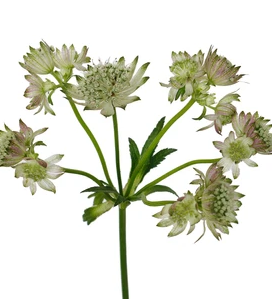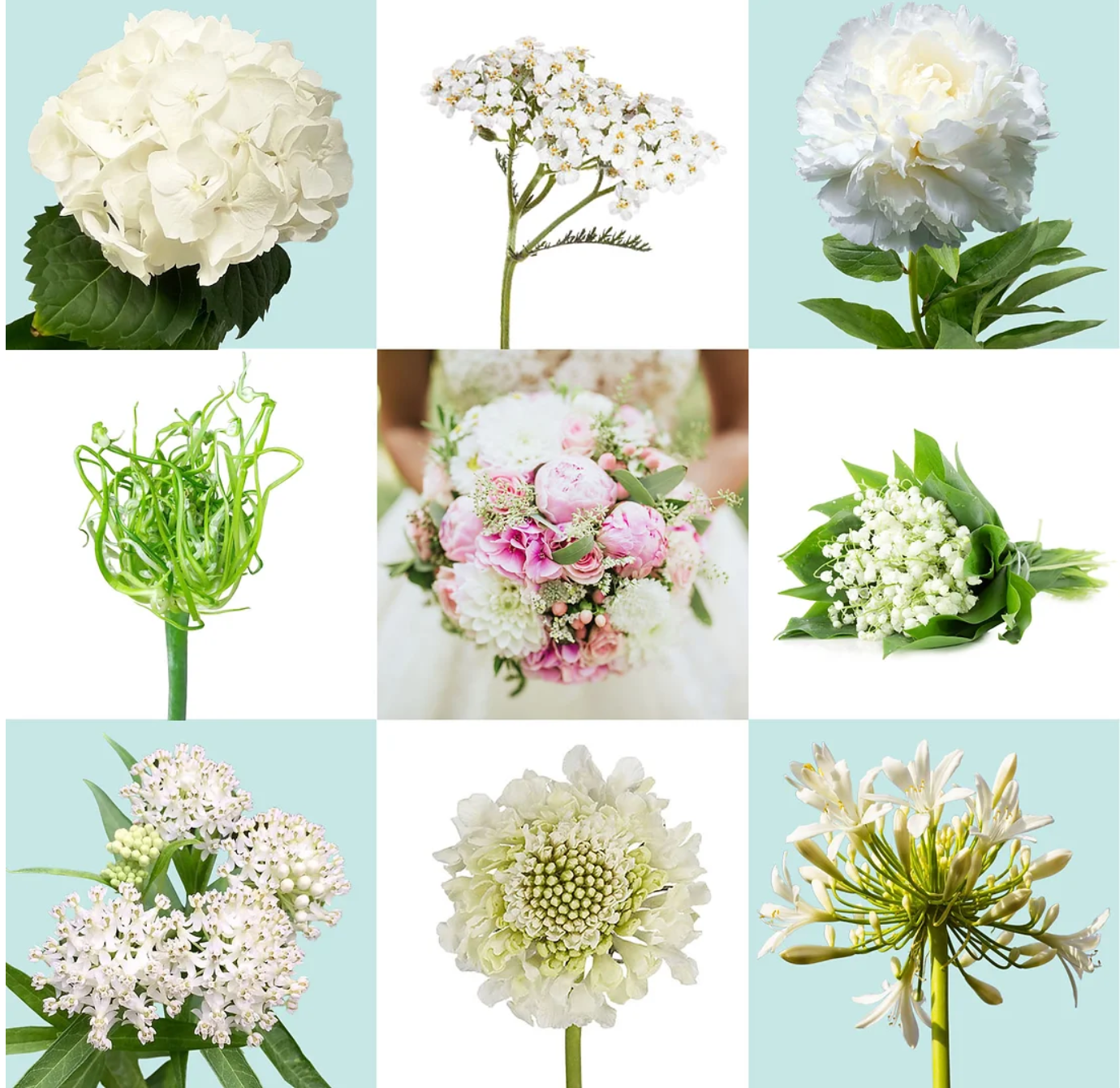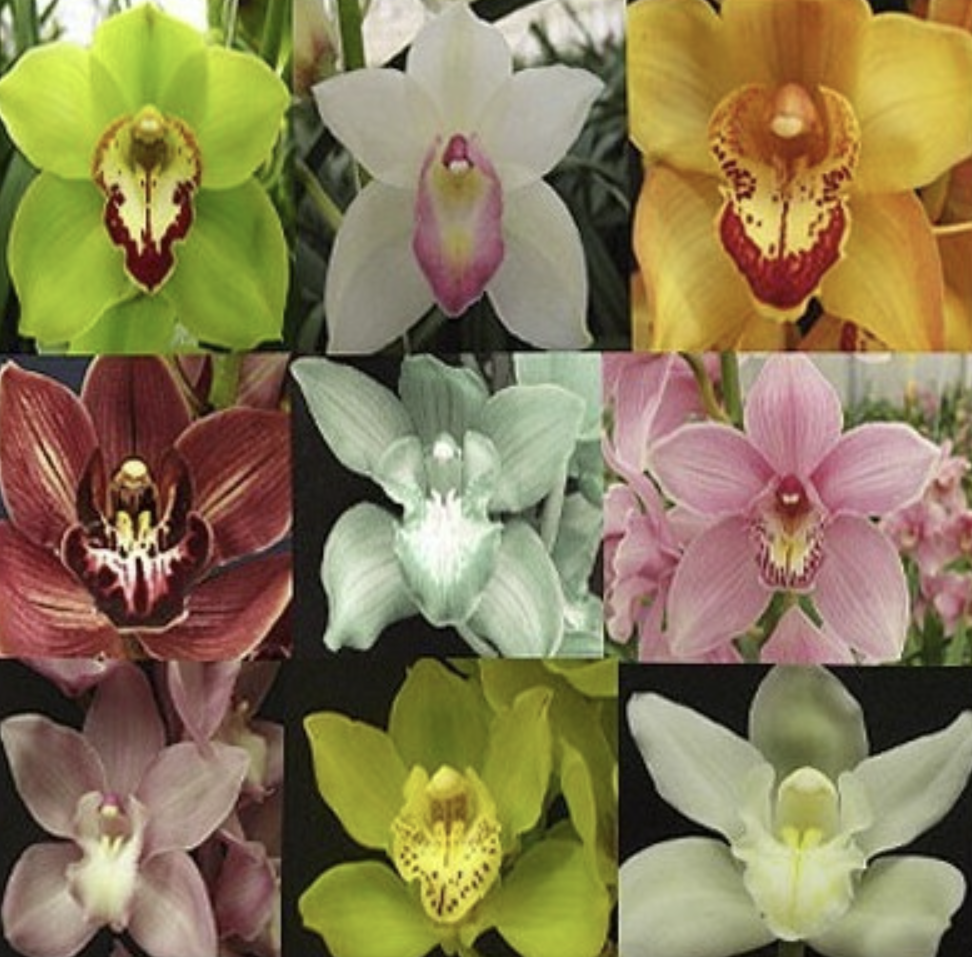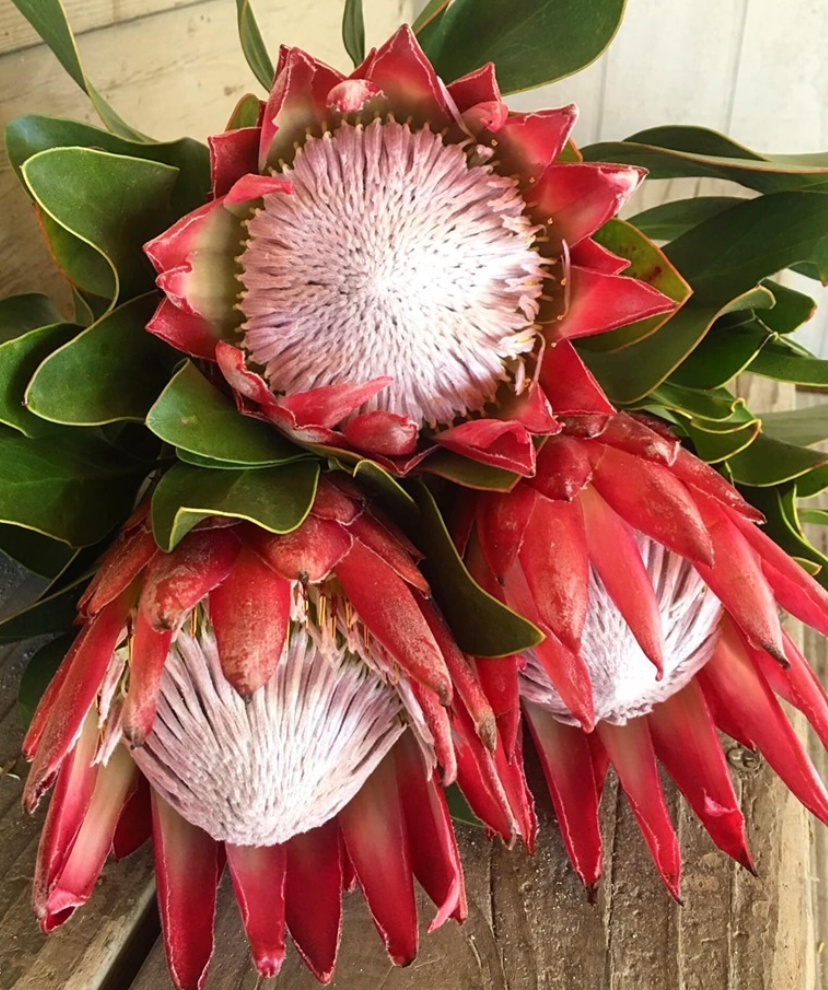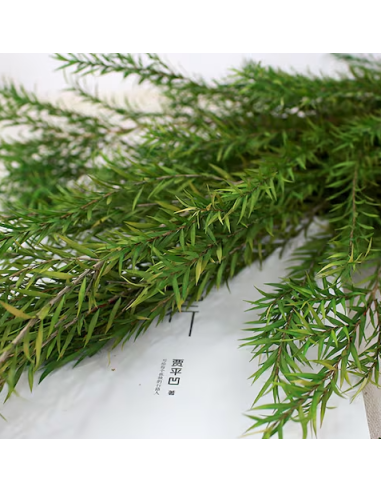Melaleuca Foliage
🌿 Melaleuca Foliage – A Textural Accent for Florists
Melaleuca foliage, particularly from Melaleuca bracteata, is a striking addition to floral design, offering both texture and movement. Here's a florist-focused breakdown:
🍃 Botanical Profile
- Common Name: Melaleuca, also known as paperbark or honey myrtle
- Appearance: Fine, grass-like leaves with a soft, feathery texture; often preserved or dried for longevity
- Color: Ranges from natural green to bleached ivory or dyed tones (black, burgundy, etc.)
- Fragrance: Lightly aromatic when fresh; some varieties used in essential oils
💐 Design Uses
- Texture & Line: Adds airy structure and vertical movement to arrangements
- Styling: Ideal for modern, boho, or rustic aesthetics; works well in wreaths, garlands, and tall vase compositions
- Pairings: Complements dried florals like pampas, lunaria, and preserved roses; also contrasts beautifully with lush garden blooms
🛒 Bunch Details
- Typically sold in bundles of 4–6 stems
- Length ranges from 45–55 cm (approx. 18–22 inches)
- Lightweight and easy to shape or weave into designs
Flower Care Steps – From Arrival to Use
Step 1: Unpack and Inspect
-
Unpack Promptly: Open your boxes as soon as they arrive and remove any straps or outer packaging such as foam or paper. Take photos of the box labels on the ends of the boxes showing the product name, NOT the fedex labels. This is crucial in the event of any quality or other product issues.
-
Inspect Your Greens: Look over your products for any concerns before continuing with processing.
Step 2: Prepare the Containers
-
Use Clean Buckets: Choose buckets or containers that are clean and free from soap residue or bacteria. Rinse with warm water if needed.
-
Add Water: Fill each container with at least 4 inches of fresh, cool water. If flower food is available, follow the packet directions and mix it in.
Step 3: Trim and Place in Water
-
Remove Packaging: Take off any rubber bands or plastic sleeves protecting the flowers.
-
Remove Foliage Below the Waterline: Strip any leaves that will fall below the waterline to prevent bacterial growth.
-
Trim the Stems: Use clean, sharp floral shears or scissors to cut about 1 inch off each stem at a diagonal under cool running water. Avoid using household scissors, which can crush the stems and limit water absorption.
-
Place Immediately: After trimming, place the stems directly into the prepared water.
Step 4: Hydrate and Maintain
-
Hydration Time: Allow your flowers or greenery to hydrate for at least 4 hours — 8 to 12 hours is ideal.
-
Monitor Water Levels: Flowers drink heavily when they first arrive, so check water levels frequently and refill as needed.
-
Avoid Overcrowding: Ensure each container has enough space for the amount of flowers or greens you're processing. Overcrowding can lead to damaged stems and leaves.
-
Storage Conditions: Store hydrated greenery in a cool, shaded area away from direct sunlight, heat, or drafts until you're ready to use it.
Step 5: Refresh and Use
-
Change Water Daily: Refresh the water every 24 hours to keep your greens fresh and bacteria-free until use.

